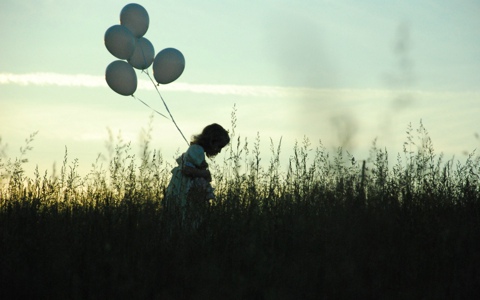
介绍三亚的导游词,大概300字左右,帮帮忙,很急
各位朋友,现在我们将要到达中国最南端的热带海滨城市三亚市,首先向大家介绍一下三亚的概况。
三亚别称“鹿城”,市花是三角梅,市树是酸豆树,酸豆树树体巨大、枝叶茂盛,树姿宏丽,是非常珍贵的草坪孤立风景树。
三亚不仅是我国天然大温室,是南繁育种和冬季瓜菜基地,更是避寒冬泳和开展潜水旅游的绝佳之处。
三亚古称崖州,由于交通闭塞,人烟罕至,被封建统治者当作流放贬官谪臣的蛮荒之地。
“一去一万里,千之千不还。
崖州在何处
生度鬼门关。
”唐代杨炎的这首诗,便反映了当时人们对三亚的感受。
三亚旅游资源得天独厚,汇集了阳光、海水、沙滩、环境、民族风情、名胜古迹和热带田园风光等众多旅游资源为一体,可以说三亚是海南热带自然景观最美,人文旅游资源最为丰富的地方。
三亚热带海滨的主要观光点和度假胜地有亚龙湾、大东海、鹿回头、天涯海角、南山文化旅游区、大小洞天、蜈支洲岛等。
它们不仅阳光明媚、沙滩细白、椰风摇翠、海韵迷人,而且都处在纯净无污染的生态环境中。
朋友们,三亚市已经到了,让我们放松身心,去融入古时被称为“极地异域”,如今正朝着国际海滨旅游城市方向前进的热土和海水吧。
([图片]2,三亚落日--lengjing)
谁有海南的导游词
海南岛是我国南海上一颗璀璨的明珠。
两千多年前,海南岛的社会文明就开始与内陆日渐繁富的封建社会文明交相辉映,共同成就了今天的泱泱华夏文明。
自然的造化,让海南岛拥有了祖国大陆所没有的宝贵的热带海洋生物资源和热带动植物资源。
岁月的流转,让海南岛积淀了丰富而独特的有中国特色文化资源和民族风情资源。
今天,我们在开发和建设海南岛的同时,保护和发掘这些资源,让它们继续给我们的后辈以物资生存的滋养和精神延展的启示,从而实现海南社会的可持续发展,已经成为我们义不容辞的责任。
海南概况 海南岛海岸线长达 1617.8千米,沿岸84个港湾可开发成港口,已开发18个。
海南岛四周多为优质沙滩,可开发成海滨旅游胜地。
近海水深200米以内的大陆架渔场6.65万平方千米,水温适中,海洋生物丰富,有鱼类1000多种,藻类 200多种。
海中五光十色、千姿百态的热带珊瑚礁鱼和各种珊瑚、海葵等海洋生物,是潜水旅游的观光美景。
海南岛中部是山地、丘陵和台地,沿海是堆积平原。
东北部由于沿海强风作用,沙地最宽达 20-30公里,有些地方几条沙堤并列,形成特殊的沙堤一泻湖平原。
沿海岸生长的珊瑚和红树林是热带海岸的标志,具有重要的科研意义和旅游价值。
热带气候影响和构造条件的作用, 使海南发育了良好的热带地貌。
海南岛西南部沿海海滩平坦,阳光充足,蒸发量大,是发展盐业的好地方,目前已建有莺歌海、东方和榆林等大型盐场。
海南矿产丰富,约有90种。
全国标明有工业储量的148种矿产,海南有67种,其中43种列入全国矿产储量。
石碌铁矿储量占全国富铁矿储量的71%,平均品位 51.5%,最高达68%,为全国第一。
钛、锆、石英、蓝宝石、化肥灰岩储量居全国之首,天然气、油页岩储量居全国前列。
西沙群岛的鸟粪资源丰富,尤其在东岛白鲣鸟自然保护区, 树上是成千上万的白腹鲣鸟,树下是厚厚的鸟粪和鸟粪化石,鸟粪有机肥含量非常高,是天然磷肥的原料。
沿海平原主要种植粮食作物和糖蔗, 还有热带水果四季飘香。
海南素有天然温室、热带果园美称。
全省热带作物和热带水果栽培面积大,种类繁多。
1996年热带水果种植面积8.99万公顷,收获面积为3.66万公顷,产量36.16万吨。
槟榔、益智、砂仁、巴戟是四大南药, 产量占全国产量的99.9%,热带作物总面积 42.9万公顷,其中1997年胡椒、咖啡、腰果的种植面积分别在全国占77%、63%和90%。
海南盛产橡胶、 甘蔗、椰子、咖啡、胡椒、槟榔等热带作物,水果有椰子、菠萝蜜、菠萝、荔枝、芒果、香蕉、红毛丹、鸡蛋果、 人心果、水蒲桃等,更有从国外引进的上千种珍奇的热带植物,如榴莲、铁力木、金鸡纳、香茅草等。
海南中部为山岭地带,是热带雨林、季雨林组成的原始森林区。
海南的五大热带森林区分别是五指山林区、坝王岭林区尖峰岭林区、吊罗山林区和黎母山林区。
海南热带天然林面积广大,据1994年的调查达58.73万公顷,占全省面积的17.3%,主要分布在中南部海拔500米以上的山地,因地理条件而垂直分布,至上而下有山顶矮林、热带山地雨林、热带雨林、热带季雨林热带针叶林、红树林等。
热带天然林的主要特征是林木高大,茂密常绿,物种繁多,树龄差异大,林分结构复杂,常在3-5层以上, 板根现象普遍,树上附生植物丰富,木质藤本植物发达,有大树老茎生花现象。
海南热带生物资源最为丰富,已发现各类木本植物259科、1347属、4200种,约占全国的七分之一。
其中 630多种为海南独有,20多种为珍稀树木。
世界热带显花植物属种最多的第一类17科中的植物,海南岛全有。
全岛资源植物 2900多种,药用植物占 2500多种,入药典500多种,其中抗癌植物13种。
海南素有天然药库之称。
海南的森林覆盖率51.5%,被国务院授予实现造林绿化规划省的荣誉称号。
热带森林不仅有良好的经济效益和生态效益,也成为开展森林旅游和生态旅游的好去处。
全省已确定各类自然保护区73处,其中国家级5处,省级19处。
现有陆栖脊椎动物561种,其中两栖动物102种,其中一类有15种,二类87种。
沿海平原和中部山地之间的台地,多开辟为热带经济作物区。
【椰岛】 海南岛别称椰岛。
在整个海南,处处可见到高大挺拔、四季结果的椰树。
它们在不同的时刻、不同的地点,呈现不同的韵味。
椰树独钟情于海南,是海南四大热带作物(椰子、橡胶、胡椒、腰果)之一。
我国其它热带地区也有椰树,但很少结果。
海南的椰子产量占全国总量的99%以上。
只有海南椰树果实累累,并且果汁果肉特别清甜。
椰树在海南历史久远,关于椰树的传说。
一种说法是: 椰树是一黎族先民首领越所变,椰子便是越王头;神话传说反映了黎族先民开发海南的献身精神。
另一传说是一位在海边引颈翘望丈夫归帆的年轻女子,化为椰树,椰树美丽的叶羽是她头上的草帽;美丽的传说表达了海南人们对美好爱情的向往; 还有更多的传说,使椰树的蕴涵格外丰富。
椰树的来源,较为科学的解释是:椰树原产马来群岛,在古代, 不需要土和水到时间自会发芽的椰果落在海中,漂到海南,扎根宝岛,终成奇观。
椰树浑身是宝。
椰子可以加工成多种多样的食品和饮品,成为海南打向世界的拳头产品。
椰子汁、 肉、根、壳均可入药,椰油可制成高级化妆品。
海南的椰雕工艺源远流长,精湛奇巧,在古代被作为面天贡品。
千百年中,海南人民形成了不少与椰树有关的习俗,椰树是海南乡亲的吉祥物。
在文昌一带,人们订婚、结婚、生儿以及其它喜庆大事,总要栽椰树作为纪念。
海南乡亲认为,椰子吸纳太阳的精华, 所以晴天里上午10至12点新摘的鲜椰汁水最甘美。
在海南,椰子不仅进入人们的物质生活领域,同样进入人们的精神生活领域。
有关椰子的民歌数不胜数。
鹊鸟爱穿椰子林,椰子能甜鹊鸟心。
妹作椰子叶下挂,单等情哥来穿林。
如此纯情的妹子以椰自喻,你能不捧椰痛饮吗
椰子装扮了海南,也塑造了海南人,形成了最具海南特色的地方文化--学者们称之为椰文化, 并指出:椰树是海南的象征,椰树的品格是海南人民的象征,这是海南椰文化最深层的内涵。
从1992年4月起,每年海南都举行国际椰子节。
椰子,在中国最大的经济特区, 扮演了新的重要角色,成为让海南走向世界,让世界了解海南的媒介和桥梁。
【长寿岛】 海南还是没有污染的长寿岛。
全国第三、第四次人口普查结果表明: 海南人均寿命居全国之冠。
1996年,海南人口的平均预期寿命是73.13岁,高于全国人口平均寿命3.13岁,是全国人口平均预期寿命最高的省份之一。
专家们认为,海南人长寿的奥秘在于海南岛有一个美丽纯净的生态环境。
导游词200字
大家好,我是你们的导游——王导,今天就由我来给大家讲解颐和园的风景名胜。
请大家随着我走。
现在,我手指的这个是著名的长廊。
这个长廊可不一般。
它全长700多米,分成273间。
大家可以看到,每间的横槛上都有许多五彩图画,画得各式各样,有人物、花草、风景,几千幅画没有哪两幅是相同的。
难怪被称为“世界第一廊”。
大家往前看,这就是碧波荡漾的昆明湖。
这片湖静得像一面镜子。
游船经常从这里经过,大家可以听到船上游人们的欢歌笑语。
在昆明湖的上面,就是闻名遐迩的万寿山。
站在这里,我们可以看到颐和园的全部风景。
站在这里看,整个颐和园真可谓是无比壮观。
郁郁葱葱的树丛掩映着黄的绿的琉璃瓦屋顶和朱红的宫墙。
一座八角宝塔形的三层建筑耸立在半山腰上,黄色的琉璃瓦闪闪发光,这就是古香古色的佛香阁。
大家快随我看看这美丽的石桥吧
这座石桥有17个桥洞,叫十七孔桥。
桥栏杆上有上百根石柱,柱子上都雕刻着姿态不一的活灵活现的小狮子。
这座在历史上为帝王建造的古典园林,现已成为中国最著名的旅游参观热点之一,每年接待游客数百万人。
1986年,颐和园被联合国教科文组织列为世界文化遗产。
大家听了我的介绍,也心动了吧
那就亲自到颐和园看看吧
作文贵德的导游词 200字
贵德县位于青海省东部,隶属于海南藏族自治州。
距省会西宁市114公里,距海南藏族自治州首府恰卜恰镇158公里。
东西宽63.4公里,南北长90.6公里,全境国土面积3504平方公里,辖4镇3乡,119个行政村,截止2013年,总人口10.87万人,有汉、藏、回、土等15个民族。
贵德是典型的多民族聚居地区,中原王朝、鲜卑、吐蕃等均在贵德留下了历史印记,境内“马家窑”、“卡约”文化遗址、汉唐古堡、明清楼阁记载着贵德的历史发展和文化演变。
其中国家级重点文物保护单位明清古建筑群—玉皇阁集儒、道、佛为一体,摒弃门户之见,并存相依,是贵德多元文化、多种宗教融合相安、和谐共存的历史见证。
导游词天涯海角
朋友们,大家好
到三亚旅游大家应该知道三亚有个别称叫“鹿城”,而这以别称就来源于我们今天将要前往的鹿回头旅游风景区。
鹿回头位于三亚市西南端鹿回头半岛上,海拔达285米,于1989年建成开放,是三亚市的标志性景区。
它也是登高望海和观赏日出日落的理想之地。
站在公园高处俯瞰,三亚市区可尽收眼底。
公园夜间仍向游人开放。
盛夏的夜晚游人到此,面对海上渔火,乘风纳凉,观赏三亚夜景,自有一番快意在心头。
景区之所以叫鹿回头,主要是与海南黎族美丽的鹿回头传说及山顶伟岸的鹿回头雕塑有关。
世界上关于鹿的美好传说如南海的浪花数不胜数,三亚的鹿回头传说就是其中的一个。
相传在很久以前,五指山有一位勤劳勇敢、热心助人的黎族青年猎手。
一天他上山打猎,发现一只色彩斑斓的坡鹿。
于是他紧迫不舍,翻过九十九座山,涉过九十九条河,追了九天九夜,一直追到这南海之滨的山崖上。
眼下是茫茫大海,再无去路。
正当青年猎手张弓搭箭之际,只见眼前火光一闪,烟雾腾空,坡鹿回头化为美丽温柔的黎家少女。
原来,天上的仙女看中了这位青年猎手的好人品,在三亚海边寻找到一个好去处,有意将青年猎手引来。
后来,仙女与青年猎手结成夫妻,在此繁衍生息,形成一个村寨。
此后,因为这个美丽动人的传说,人们将这里的半岛、山岭和村寨都名之以鹿回头,公园也以此命名。
三亚由此而获得鹿城的别称。
也因为这个传说,鹿回头山成了海南一座著名的情山,后来建成了爱情文化与生态展示并重的主题公园。
现在公园内爱情文化经典错落有致,主景点鹿回头鹿回头雕塑就是根据这个美丽的黎族爱情传说塑造的。
雕塑连底座高15米,由广东著名的五羊城雕塑者林毓豪先生花了四年心血精心完成。
在一头回眸凝望的坡鹿两侧,分立着仙女与青年猎手。
仙女窈窕俊俏,含羞带喜,已经完全是黎家姑娘的美丽妆扮。
猎手结实健壮,憨厚质朴。
别看他们背对着背,其实早已经心连着心呢。
据说同仙女、猎手合影的人们,都能得到他们的祝福,同他们分享美好爱情的幸福。
在公园内,其他爱情文化景点还有“爱”字摩崖石刻、“永结同心”台、山盟碑、“连心锁”和“月老雕像”等。
每年的11月份的天涯海角国际婚礼节,都有许多新人来到这里海誓山盟,情定中山。
朋友们,鹿回头公园到了,让我们一起去接受青年猎手和仙女的祝福吧,我也祝愿大家都能像他们一样美满幸福
跪求
介绍海南旅游景点导游词(英文)
导游考文导游词Good morning ! My name is Can I begain?Attention,please.Ladies and gentlement .Welcome to beautiful city ,Nanjing ,I am the guide xuyi .Today, we are going to visit *****. On the way to ****,let me introduce the beautiful city ,Nanjing .Nanjing is the capital city of Jiangsu Province and the provincial political, economic and cultural center ,she is located in the lower reaches of Yangtze river,southwest of the province.The population of its urban area is about 3million.Nanjing is one of the historical and cultural cities rectified by the state.She bears the reputation of the capital of Wu, Easter Jin, Song,Qi,Liang,Chen,Southern Tang,Ming, Taiping Kingdom, and Republic of china subsequently.Nanjing is a place of celebrities and humanities, with a splendid cultrual heritage.The attraction of Nanjing consists in the combination of rich natural and cultrual heritages.With many a relics of the Republic of china era in particluar , Nanjing is recognized as the museum of modern Chinese history.DR.SUN YATSENS MAUSOLEUMAmong al the historical and cultural attractions in Nanjing, the most favored highlight is Dr.Sun Yaten’s Mausoleum.Dr.Sun Yatsen’s Mausoleum sits on the southern slope of the pruple Mountain in the eatern subrub of the city. The construction began on March 12,1926 and was completed in 1929 when the remains of Dr.Sun Yatsen was transported from Beijing and buried at the present site on June,1.Dr.Sun Yatsen, also named Sun Wen or Sun Zhongshan, is considered as the forerunner of the Chinese democratic revolution.Dr.Sun Yatsen is a great man because he devoted 40 yeas of his life to pursuing his dream to overthrow the feudal monarchy and build a progressive, united and democratic Republic of china.Why was Dr.Sun Yatsen buried in Nanjing instead of in his hometown or Beijing where he died?The mausoleum site was first recommended to Dr.Sun Yatsen by the abbot of Linggu Temple for its good geomantic omen.One day in April, 1912, he went hunting at the site of present mausoleum with his friends.Dr.Sun Yatsen was really so amazed by the beautiful environment that he aid to them :I wish I could be bestowed a piece of land by people and be buried here after my death”.He once again expressed this desire in his sickbed in 1925.The architect named Lu Yanzhi .Dr.Sun Yasen’s Mausoleum is designed in the shape of a liberty bell, intending to remind people never to get self-contented. The park of mausoleum covers an area of 800000 square meters. The whole architecture ,from the gateway to the main entrance,tablet pavilion ,memorial hall and the tomb valult,lies on the north-south axis with 392 steps ans 10 platforms in between .The buildings are all constructed with natural granite and marbls and convered by blue glazed-title roofs.Opposite to the bronze incense-burner off the quare, stands the 12-meter high gateway of three arches with Dr.Sun Yatsen’s handwriting “Fraternity” carved on its front top. The 480-meter long tomb avenue, lined wih pine ,gingko and maple trees ,leads to the main entrance tower roofed by blue-glazed tile.Under the front eave of the tower, Dr.Sun Yatsen’s motto ‘The world belongs to people ‘ can be seen .Walking through it , the first building one will seee is the tablet pavilion which houses a huge tombstone which is engraved with ‘Premier Dr.Sun is buried here by the Chinese Koumingtang on Jone1,1929’. From there, a panoramic view of the memorial hall can be obtained. However, there are still 392 steps in 4 flight to go before tourists reach the memorial hall on the top , and a platform with stone benches at evry flight so as not to exhaust the climbers.The memorial hall stands 73.33 meters abov the ground. The lintel of the memorial hall is inscried with “nationalism, democratic rights and people’s livelihood” and a vertical plaque is carved with 4 characters “Hao qi chang cun ” meaning imperishable noble spirit. All these words are written in Dr.Sun’s own hand. In the center of the memorial hall sits the Italian white marble statue of Dr.Sun Yatsen mounted on a pedestal carved in bas-relief by a Polish sculptor about his revolutionary activities. The surrounding walls are inscribed with the national constitution written by Dr.Sun Yatsen. Beyond the memorial hall is the tomb vault .Standing by the side of the pool, as visitors look down, they bow to see Dr.Sun Yatsen’s reclining marble statue with his body buried 5 meters underneath. If one looks up, he will find the emblem of the nationalist Party on the ceiling.When one wraps up the homage tour and steps down, he will not only enjoy a bird’s eyeview of beautiful Nanjing , but also feel toally reliveed because he does not see any more of those 392 steps , but the platforms. Not until then, will he understand how great Dr.Sun Yatsen is.The whole mausoleum is an architectural complex in a typical and traditional Chinese style, and the layout is harmonious and rational.All the buildings are roofed with blue-glazed tiles. With pine trees and cypresses growing around ,the mausoleum looks magnificent and dignified.Dr.Sun’s Mausoleum attracts thousands of visitors everyday.XiaoLing Tomb of The Ming DynastyXiaoling Tomb,or the tomb of filial piety, built 600 years ago ,is the mausoleum of Zhu Yuan zhang , the founding emperor of the Ming Dynasty. Lying at the southern foot of the Purple Mountain ,the tomb complex is one of the largest ancient mausoleums of the emperors in china.Zhu Yuanzhang began to have his tomb built in 1381 when his wife Empress Ma died. The empress was buried in the tomb in 1383.But Emperor Zhu Yuanzhang died in 1398 and was buried here in the same year.But the construction of the mausoleum lasted 38 years or more till 1431 when ‘the Steke if Sacred Neruts abd Virtues of Great Ming’ Filial Tomb’ was erected.The mausoleum consists of two major sections.The first section is from the Gateway of Dismounting Horse to the Lingxing Gate at the end of Sacred Way(tomb avenue), of which the approach is 1800 meters long. The second part is the tomb itself. Historical records indicate the mausoleum had a grand red wall, 22.5 kilometers long, enclosing the whole tomb area. The tomb conple was very large with many splendid buildings. 100000 pines were planted and 1000 deer raised in the park of mausoleum. Unfortunately, this large group of buildings was ruined by the wars in the late Ming and early Qing dynasties and the war in which by the Qing Dynasty army. All the wooden structures wre destroyed. However we can still see the exquisite stone carvings from the stone bases and imagine how magnificent it looked like 600 years ago.The tomb gate known as grand golden gate was a traditional architecture and connected with the red wall. The gateway of Dismounting Horse locates about 750 meters south from here.This shows the absolute dignity of Emperor Zhu Yuanzhang at that time.To the east of the gateway,there are two tablets:the holy Mountain Tablet and the Tablet of Mountain Forbidden Regulations decreeing the entrance of the ordinary people into the holy area was to be severely punished. The royal court dispatched troops here to atand as guards at the mausoleum in the years.that is why the site has been called Xiaolingwei meaning the Town of Filial guard.Northwards from the great golden gate, a huge roofless stone tablet pavilion canbe seen ,it is the Square Castle, as local people call it . Its top is gone but the surrounding walls and four archways still remain. In the middle of the building ,there stands ans 8.78 meters high stele called :The Stele of Sacred Merits and Virtues of Great Ming’s Filial Tomb.It was built in 1413 by the third emperor ,Zhu yuanzhang ‘s fourth son.The stele is inscribed altogether with 2746 Chinese characters in praise of the merits and virtues of Emperor Zhu yuanzhang .The sacred way is lined on both sides with 12 pairs of giant stone animals in 6 kiinds. For each kind of the animals, there are one pair standing and the other kneeling. The standing pair is working and the kneeling resting and they are on duty alternately. The real purpose of building these animals is to demonstrate the royal magnificence and the emperor’s dignity, to drive away evil spirits and guard the tomb. The first 2 pairs of animals are lions, king of the beasts symbolizing power.The second 2 pairs of animals are called Bixie, a unicorn-shaped mythical animal, said to e clever and capale of distinguishing between good and evil.The following pairs of animals include camels, elepahants, Kylins or chinese unicorns and horses. The camel is known as boat in the desert and symbol of prosperity. Each elephant , which is the largest and heaviest sculpture, weighs 80 tons and symbolizes peace. The kylin represents good luck as well as horse loyalty.In ancient times ,it was rather difficult to move these heavy stone animals. The fact is that workers splashed water on the ground in cold winter, and pushed the stone animals to the present locations on the surface of frozen ice.Two 6.25 meter-high stone pillars serve as alters for the sacrificial offerings. Both the hexagonal pillars are carved with the patterns of clouds and dragons arousing visitors’sreverence and worship to the emperor . The sacred avenue makes a right turn here just because the Plum Blossom Hill stands in the way. The hill is the tomb for Sun Quan , The first emperor of Eastern Wu kingdom. It is said that when the tomb was constructed,some ministers suggested that Sun Quan’s tomb should be moved away. But Emperor Zhu Yuanzhang commented that Sun Quan was a good fellow and should stay there to be the concierge of his tomb. The Plum Blossom hill now is popular excursion site for the local people in spring when the plum trees are in full blossom.Beyond the memorial pollars there are 4 pairs of stone WenZhongs,2 pairs each of court officials and warriors. Legend has it that there was a giant about 10meters tall of Qin Dynasty.The warriors,3.26meters high, are in armor with weapons in hands while court officials are in court ceremonial robe with writing board in hans to take notes of the emperor’s edict.Behind the statue, there used to be a gate named Lingxing Gate.About 270 meters away from the gate is the stone bridge spanning over a small stream, yet it is called the Imperial Moat Bridge.The bridge used to have 5 arches , but was renovated into 3 arches later in the Qing Dynasty. The bridge foundation and stone dykes are the original except the rail.About 200 meters north of the Imperial Moat Bridge is the front gate to the tomb. This area is the rear section of the tomb.The arch gate has 5 doorways, with yellow glazed tiles, red walls and doors . The lintel of the middle gate is engraved with 3 Chinese characters Meaning ‘Xiaoling Tomb of Ming Dynasty’. Or “Ming’s Filial Tomb” given by the emperor himself but Ming was added actually later in the Qing timees. It reflects the emperor’s idea to administer the country with filial piety which is the very instruction of Confucius, the most influential Chinese philosopher.At the right of the gate, there is a table stone on which is inscribed with ‘The Special Notice’ written in 6 foreign languages of Japanese,German, English, French, Italian and Russian respectivel to reaffirm the attention to the protection of the filial tomb in the late Qing years.Inside the gate is an entrance hall, of which in the middle is ‘the Stele of Administering the ountry well as the Tang and Song dynasties’. The tablet stone is engraved with the handwriting of Emperor Kangxi when he was paying his homage to the entombed emperor during his third inspection tour to the area in 1699.Standing behind the hall is the Filial Hall or Sacrificial hall ,which is one of the major buildings in the mausoleum employed to enshrine Emperor Zhun Yuanzhang and his empress.But the original was destroyed in the wars, and the present one was rebuilt and twice restored in the Qing Dynasty.The citadel of Treasures is the last building on the ground, 16.25meters high, 75 meters wide and 31 meters in depth. Ascending a flight of 54 stone stairs from an archway of the citadel is the tomb proper covered by a large earthen mound 400 meters in diameter. Under the mound rest the emperor and his consorts , and as the records testify, 50 or more concubines and maids of honor were buried alive for company. Their families were ensured holy titles, but these young lives became the eternal victims of feudal sacrifice system.The tomb is at the foot of Purple Mountain. It has not been excavated because of the technical reasons of preservation.Linggu TempleLinggu Temple park lies about one and half kilometers to the east of Dr.Sun Yatsen’s Mausoleum. It was called Jiangshan Temple in ancient time and its original site was in Dulongfu at the foot of the purple Mountain. However, in the early days of the Ming Dynast(1368-1644),Emperor Zhun Yuanzhang chose that place to build his tomb, thus the temple had to be moved and rebuilt at the present site and was renamed as the Linggu Temple with an inscription “The Fist Buddhist Forest” at the entrance there is a secluded footpath with thousands of pine trees, verdant and luxuriant , so it is called the “Valley of Spirit Deep in Pines”. It is one of the 48 attractions in Nanjing . Main attractions in the park include LInggu Temple , the gateway of officers and men killed in action, Beamless hall,Pine and Wind Pavilion, Linggu Pagoda, Monk Baogong Pagoda and Table of three Great Artists, etc.The first major attracton is the gate way of officials and men killed in action. In November 1928, when Chiang Kaishek’s Kuomintang government made a decision to turn the Linggu temple into a crmetery of officials and men killed in battles, the original entrance to the temple was rebuilt into a three-arch gateway for the dead officials and men. The gateway has 5 principle colums made of concrete cement. The gate has its foundation inlaid with granite on surface and roofed by blue-glazed tile. The lintel of the middle door is carved with 4 Chinese characters “great Justice and Virtue” in front face and “Salvation of the Nation and People” on the back. The side lintels of the gate are decorated with the emblems of the Kmt party.Inside the park there is the Beamless Hall built in 1381 in the Ming dynast. The hall,53.8 meters long, 37.85 meters wide and 22meters high, was built entirely of bricks and stones from top to bottom without a piece of wood, hence the name. There are nine ouverlapping redges and three dagobas decorating the top reges. In terms of size, the Beamless Hall stands first and formost of its kind in china. It was built more than 200 years earlier than the other same kind Hall in other ares.No wonder it is considered a masterpiece of Chinese stone-brick buildings. The diffculty involved in its construction and the complexity of techniques adopted testify the wisdom of the architects of that time in china.In 1928, the KMT government turned the hall into a sacrificial memorial hall to hold memorial ceremony for the martyrs, and a stand in the main lobby of the hall for worshipping the Boundless Longevity Buddha was turned into sacrificial platform. The middle of the three tablets on the hall is engraved with characters reading “The Bier of the National Revolutionary Martys”.”Dying Words of the State father” inscribed on the right and national antem of the Republic of china on left.The names of 33000 officials and men died in the North Expedition War against Warlords and the War of Resistance against Japan are carved on the black marble tablets inlaid in the walls. All these remain intact as they were in the 1930s.An irregular and zigzag enclosure wall is built between the Beamless Hall and the Pine and Wind Pavilion, symbolizing the rim of KMT Blussky and Dayright Flag. A tree planted in the middle of a circle symbolizes the Sun with brick made halo around.No.1 cemetery is in between the two sacrificial pillars standing near the hall. The other two cemeteries locate on both west and east of the Beamless Hall.The whole design seems that the cemetery is under the bluesky and Daybright Flag.The Pine and Wind Pavilion was built in 1929, as the memorial hall of the officials and men killed in the action with the things left behind by the martyrs.The pavilion was damaged in the war of Resistance against Japan and restored agter 1949. The present name Pine and wind Pavilion was given after its restoration. Beyond the Pavilion is and ancient two-layered tripod , on which is inscribed 4 characters “Engraved Trepod for Memory of Merits”Linggu Pagoda was built in 1933 as a memorial pagoda for the officials and men killed in wars. The ninestoreyed ovtagonal, is over sixty-meter-high, with a corridor encircled by stone rails on each story. The pagoda was designed by the famous architects Mao Fei and Dong Dayou . 3 characters “Linggupagoda” are inscribed on the lintel of the front door and “where there is a will there’s a way” on the lintel of the back door. On the exterior wall there are 4 characters “Faithful Dedication to the Service of the nation” which is the handwriting of Chiang Kaishek. Inside the pagoda a spiral staircase of 252 steps winds to the top through the nine stories. The inner walls from the second floor to the forth are inlaid with Dr.Sun’s farewell speech made in Whangpoa Military Academy on November 30,1924 just before the starting of the North Expedition War. The inner walls from fifth to the eighth are inlaid with Dr.Sun’s opening speech for Whangpoa Militray Academy made on June 16,1924. When one gets to the top story and gazes into the distance, one can get panoramic view of the entire area with fantastic scenery.In the bushes west of Pine and Pavilion there lies a tomb pagoda “Baogong Pagoda” named after the eminent Monk Baozhi of the southern Dynasties.The linggu Temple was relocated to the present site in the Ming dynasty and Linggu Buddhist Monastery by Emperor Zhu Yuanzhang. The present temple is much small than it used to be .In the temple there is the Treasure Hll of the Great Sage. In the east of the hall , there is a chamber , which used to be called the Goddesso fo mercy Hall. But it is turned to bhe memorial hll of Master Xuan zang, who went on a pilgrimage to India in the 7th century and brought back with him large quantities of Buddhist sutras. Then he devoted to the translation of these sutras and greatly enriched the Chinese Buddhist culture in the Tang Dynasty.City wall of Ming DynastyThe building of the wall began in 1366, ordered by Zhu Yuanzhang who adopted the suggestion of “building the high wall” by one of his staff and founded the Ming Dynasty two years later.More than 200000 people were employed on the project and many of them died befor the wall was completed in 1386.The wall was 33.678 kilomters in circumference and 14.21 meters high on average. The base of the wall is 14meters wide and the top of the wall is 7meters wide.It was the ongest city wall in the world and the city enclosed by it remained the world’s largest until the 17th century. Great part of the wall base is made of granite or rectangular slabs of lime stone,and both sides of the wall are laid with huge bricks. Each brick is 45 centimeters long, 20 centimeters wide and 10 centimeters thick with a weight of 15 kilograms. The bricks were cemented in with a mortar of lime mixed with tung oil and glutinous rice gruel. In order to guarantee the quality of the wall, Zhu Yuanzhang had tight control over the making of all bricks. The brick-makeers and the officials were responsible for overseeing the quality. In case a brick was found not up to the standard, all of them were supposed to be punished. Therefore many parts of the wall are



